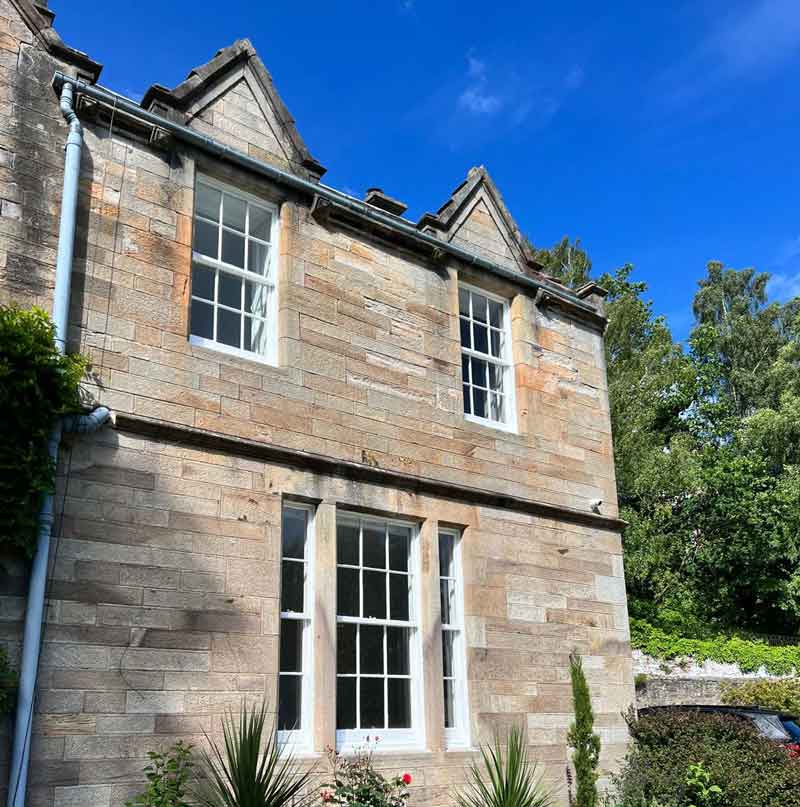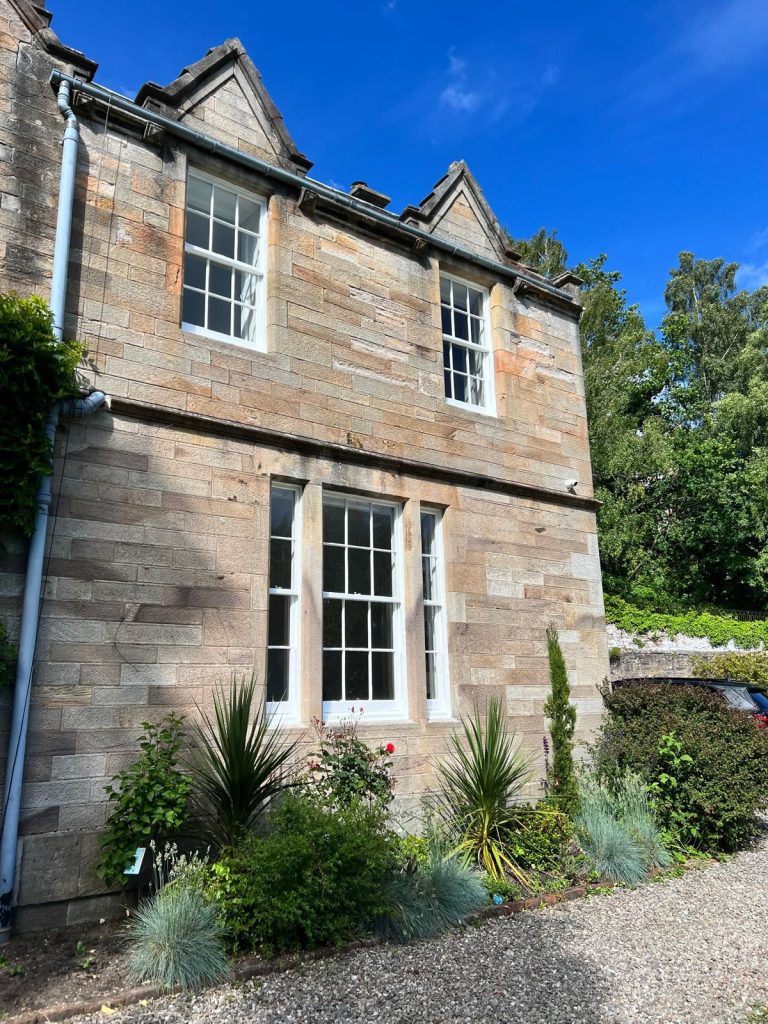Sash and Case Window Restoration in Bridge of Allan, Stirling
Sash and case windows are a quintessential feature of Scotland’s architectural heritage, particularly in historic towns like Bridge of Allan, Stirling. Renowned for their elegant design and functionality, these windows have become synonymous with the traditional aesthetics of Scottish buildings. However, as time progresses, many of these structures, including residential and commercial properties in Bridge of Allan, face the ravages of time, weather, and wear. Thus, the restoration of sash and case windows has emerged as an essential practice, marrying historical preservation with modern-day sustainability.
Understanding Sash and Case Windows
Sash and case windows consist of two movable frames or sashes that slide vertically within a fixed outer frame or case. This design, which dates back to the 17th century, allows for effective ventilation and natural light while providing a classic appearance that complements the style of many period properties. These windows are typically made from timber, which contributes to their charm but also requires regular maintenance to counteract issues like rot, draughts, and energy inefficiency. Joiners Bridge of Allan.

In Bridge of Allan, a village characterized by its rich architectural history and picturesque surroundings, the preservation of sash and case windows is particularly significant. The area boasts an array of Victorian and Edwardian buildings, each contributing to the town’s unique character. As such, any restoration work must be approached with a keen awareness of historical integrity and local heritage.
Sash and Case Window Refurbishment in Bridge of Allan, Stirling
Restoration of sash and case windows is a meticulous process that involves several steps aimed at not only preserving the windows but enhancing their functionality and aesthetic appeal. Here’s an overview of the typical procedures involved:
1. **Assessment**: A thorough inspection is the first step in the restoration process. This involves evaluating the condition of the windows, identifying any signs of damage, such as rot, broken glass, or faulty mechanisms. The assessment helps conservators determine the best course of action, whether it involves simple repairs or complete overhauls.
2. **Dismantling**: If the windows require extensive work, they may need to be removed from their frames. This careful dismantling ensures that each component, including the sashes, pulleys, and weights, is preserved for restoration or replacement.
3. **Repairing and Replacing**: This phase involves repairing damaged parts of the windows. Techniques may include filling in rot with epoxy resin, replacing broken glass panes with historically accurate glazing, and restoring the original mechanisms that allow the sashes to slide smoothly. Where the damage is severe, full replacement of the affected sections may occur, using timber that matches the original materials.
4. **Painting and Finishing**: Once repairs are made, the windows are treated with appropriate finishes to protect against weather damage. Traditionally, a breathable paint that allows moisture to escape is chosen to maintain the integrity of the wood while providing aesthetic appeal.
5. **Reinstallation**: After the restoration is complete, the windows are carefully reinstalled, ensuring that they align correctly within the frames and function effectively. The use of draught-proofing materials can also be considered at this stage to improve energy efficiency without compromising the window’s look.
6. **Maintenance Education**: Finally, educating property owners on proper care practices is essential. Regular maintenance, such as repainting every few years and checking for signs of wear, helps extend the life of sash and case windows.

Benefits of Restoration
Restoring sash and case windows is not merely an aesthetic decision; it brings numerous benefits to property owners and the community. From a conservation perspective, maintaining these windows preserves the historical character of Bridge of Allan, ensuring that its architectural narrative continues to be told.
Energy efficiency is another critical advantage. Restored sash windows, particularly when paired with modern glazing techniques, can significantly improve insulation, reduce energy costs, and enhance comfort in homes and businesses. Furthermore, restoring rather than replacing windows contributes to sustainable practices by reducing waste and conserving materials, aligning with contemporary environmental concerns.
Sash and Case Window Repairs in Bridge of Allan, Stirling
The restoration of sash and case windows in Bridge of Allan, Stirling, serves as a testament to the town’s commitment to preserving its architectural heritage while adapting to modern needs. By honouring traditional craftsmanship and employing skilled artisans, the community can continue to appreciate the beauty and functionality of these historic windows. Ultimately, such restoration efforts not only benefit individual properties but also enhance the village’s overall charm, making it an attractive destination for residents and visitors alike. As we move forward, the ongoing commitment to maintaining and preserving these windows will undoubtedly play a crucial role in the heritage conservation narrative of Bridge of Allan.
